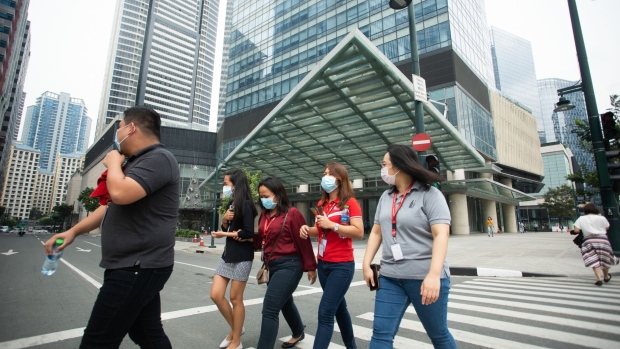Feb 20, 2020
Young, Female Are Top Philippines’ Property Seekers, Lamudi Says
, Bloomberg News

(Bloomberg) -- Follow Bloomberg on LINE messenger for all the business news and analysis you need.
In the Philippines, the majority of real-estate seekers are young and female.
Data released Thursday by online property broker Lamudi found that women comprised around 60% of sales leads while people between 25 and 34-years-old made up almost 50% of leads.
“Filipinos develop an interest in property ownership at a young age and continue to make inquiries as they become more financially stable in their mid-30s or progress to a new life stage,” Lamudi said.
Residential property prices in the Philippines rose 9.5% quarter-on-quarter in three months to Sept. 30, the latest central bank data show. Rent for dwellings in key business districts rose 7.3% in 2019 from a year earlier as more workers chose to live closer to their employer.
The Lamudi report, in collaboration with Colliers International Group Inc., also forecast around 15,610 residential apartments will come to market in 2020, outpacing the annual completion of 10,700 units in 2016 through 2018. That sort of supply is a problem until infrastructure catches up, the report said.
“Until train lines, expressways, and subways are completed within 2022 to 2025, the major business districts Makati CBD, Ortigas Center, Fort Bonifacio, and the Bay Area will experience heavy traffic, which has spurred the decision of developers to build co-living residential places near business hubs,” it said.
Read more: Half of Manila’s Office Workers Looking at Dorms to Skip Traffic
Condominiums near universities are also of interest to developers, with the average dorm user in Manila willing to pay around 4,000 pesos ($79) to 6,000 pesos a month.
“Their monthly cost of the commute is more than 4,500 pesos, which determines the amount they’re willing to pay for rent to be near enough to walk or to take one bus,” the report found.
In the Philippines’ hotel market, the projected completion of 3,300 rooms this year should be absorbed by the sustained growth in foreign arrivals. According to Colliers, this will bring occupancy rates to about 70%.
Read more: March Mall Sale May Jolt Philippine Retail as Virus Curbs Travel
Tourists arrivals reached 8.3 million in 2019, a 15% increase from 2018, government data show. The Southeast Asia nation’s top tourists were from South Korea, with almost 2 million arrivals, followed by China, at 1.7 million arrivals.
Those figures are likely to be significantly down in at least the first quarter of 2020 due to the spreading coronavirus, which originated in China’s Hubei province -- the epicenter of the disease where Wuhan is located.
To contact the reporter on this story: Siegfrid Alegado in Manila at aalegado1@bloomberg.net
To contact the editors responsible for this story: Cecilia Yap at cyap19@bloomberg.net, Katrina Nicholas, Clarissa Batino
©2020 Bloomberg L.P.





